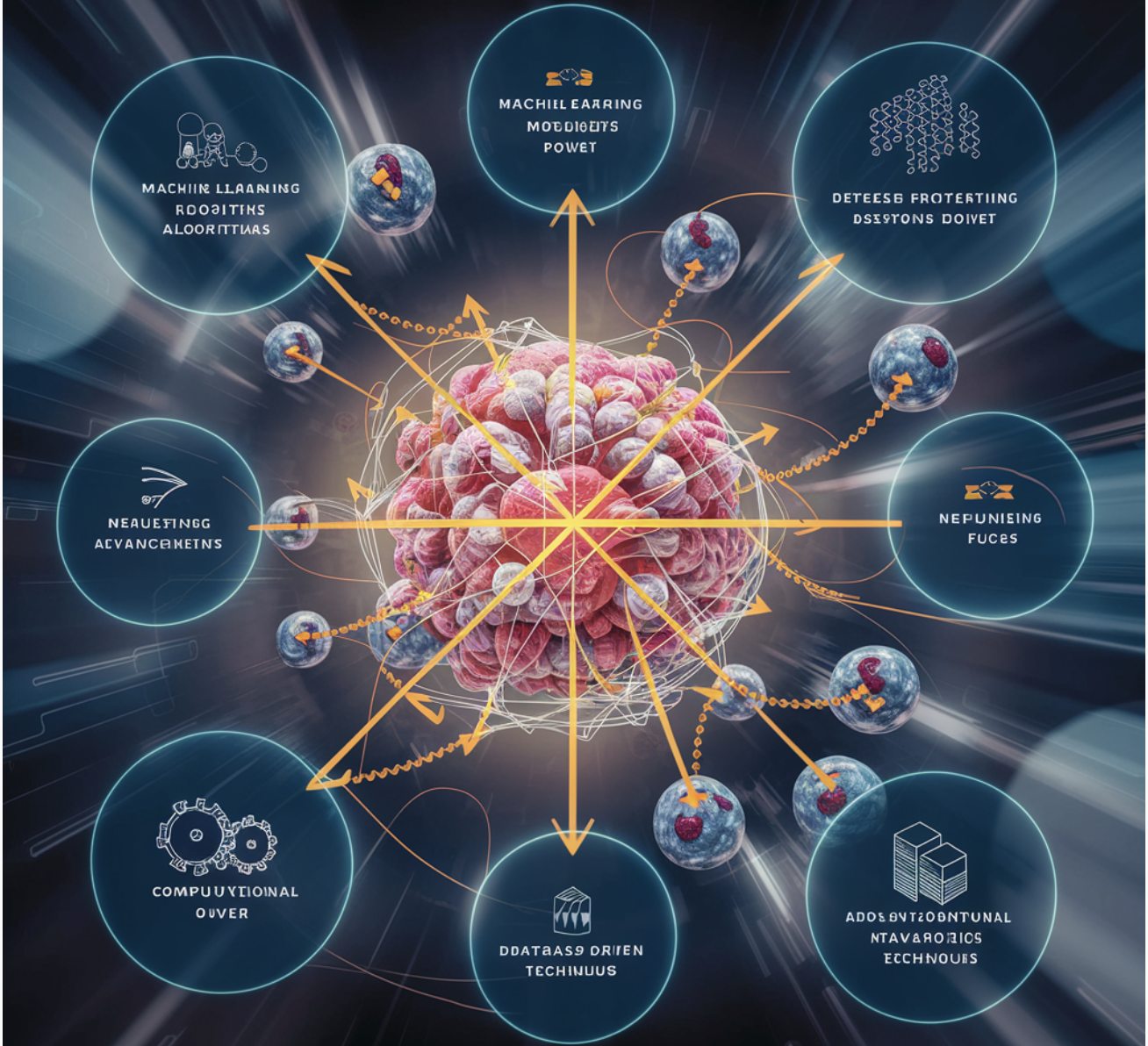

Protein engineering, a rapidly evolving field in biotechnology, has the potential to revolutionize various sectors, including antibody design, drug discovery, food security, and ecology. Traditional methods such as directed evolution and rational design have been instrumental. However, the vast mutational space makes these approaches expensive, time-consuming, and limited scope. Leveraging large protein databases and advanced ML models, especially those inspired by NLP has significantly accelerated the process of protein engineering. Advances in topological data analysis (TDA) and AI-based protein structure prediction tools like AlphaFold2 have further enhanced the capabilities of structure-based ML-assisted protein engineering strategies.
Machine learning-assisted protein engineering (MLPE) leverages data-driven techniques to enhance the efficiency and effectiveness of protein engineering. ML models can swiftly generate and test numerous protein variants by analyzing and predicting the impacts of mutations, optimizing the protein-to-fitness landscape even with limited experimental data. MLPE involves a comprehensive approach integrating data collection, feature extraction, model training, and iterative validation, supported by high-throughput sequencing and screening technologies.
Advanced mathematical tools such as TDA and NLP-based models play a crucial role in data representation, which is vital for accurate model training and prediction. Despite substantial advancements, challenges like data preprocessing, feature extraction, and iterative optimization persist. The review addresses these issues and discusses potential future directions in the field, aiming to improve the methodologies and outcomes of MLPE further.
Sequence-Based Deep Protein Language Models:
Recent advancements in NLP have inspired computational methods for analyzing protein sequences, treating them similarly to human languages. Sequence-based protein language models, leveraging local evolutionary data from homologs and global data from large protein databases like UniProt, have been developed to predict proteins’ structural and functional properties. Techniques range from local models using Hidden Markov Models (HMMs) and variational autoencoders (VAEs) to global models employing large NLP architectures like Transformers. Hybrid approaches, such as fine-tuning global models with local data, further enhance prediction accuracy, exemplified by models like eUniRep and Transcription.
Structure-Based Topological Data Analysis (TDA) Models:
Structure-based models using TDA address the limitations of sequence-based models by incorporating stereochemical information. TDA, rooted in algebraic topology, characterizes complex geometric data and uncovers topological structures. Persistent homology, a key TDA method, analyzes multiscale data, while persistent cohomology and element-specific persistent homology (ESPH) enhance this by including heterogeneous data. Persistent topological Laplacians further capture data complexity. GNNs and topological deep learning combine connectivity and shape information, advancing protein structure analysis and function prediction with drug discovery and protein engineering applications.
AI-Aided Protein Engineering: Challenges and Solutions:
Protein engineering is a complex optimization problem that aims to identify the optimal amino acid sequence that maximizes specific properties such as activity, stability, and selectivity. This problem is compounded by the sequence space’s vastness and the fitness landscape’s epistatic nature, where interactions among amino acids are highly interdependent and nonlinear. Traditional methods like directed evolution often get trapped in local optima and need help navigating the high-dimensional fitness landscape. Moreover, experimental approaches are constrained by the sheer number of possible mutations and the limited throughput of assays, making exhaustively exploring the entire sequence space impractical.
Recent advances in machine learning have significantly enhanced the protein engineering process by enabling efficient exploration and optimization within this vast search space. Machine learning models, leveraging limited experimental data, can predict protein fitness with high accuracy through techniques such as zero-shot and few-shot learning. Zero-shot models, like VAEs and Transformers, can assess the likelihood of a new protein sequence being functional by recognizing patterns from naturally occurring proteins. On the other hand, supervised regression models, including deep learning and ensemble methods, use labeled data to predict fitness landscapes and guide the search for optimal sequences. Active learning strategies refine this process by balancing exploration and exploitation, utilizing uncertainty quantification models like Gaussian processes to navigate the fitness landscape more efficiently. This iterative approach, integrating machine learning predictions with experimental validation, is crucial for achieving optimal solutions in protein engineering.
Conclusion:
The review highlights the advancements in deep protein language models and topological data analysis methods for protein modeling, emphasizing the accelerated progress in protein engineering through MLPE methods. Structure-based models often outperform sequence-based ones due to more comprehensive data on protein properties despite the limited availability of structural data. Cutting-edge methods like AlphaFold2 and RosettaFold are expanding structural databases with high accuracy. Future directions include developing alignment-free prediction methods, sophisticated TDA techniques, and large-scale deep-learning models to utilize extensive datasets from advanced biotechnologies like next-generation sequencing.
Sources:
- https://arxiv.org/pdf/2307.14587
- https://arxiv.org/pdf/2405.06658
The post Advancements and Future Directions in Machine Learning-Assisted Protein Engineering appeared first on MarkTechPost.